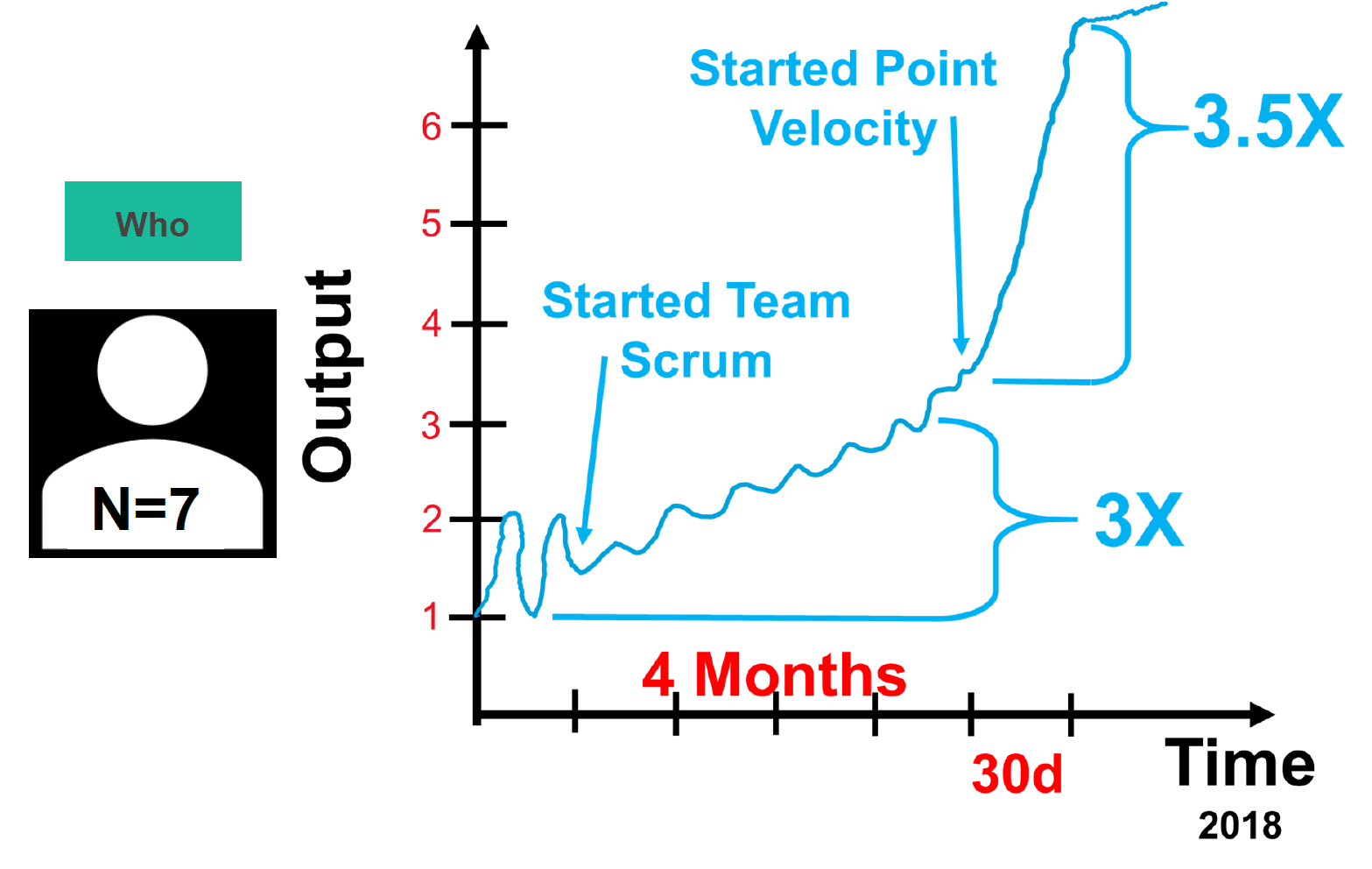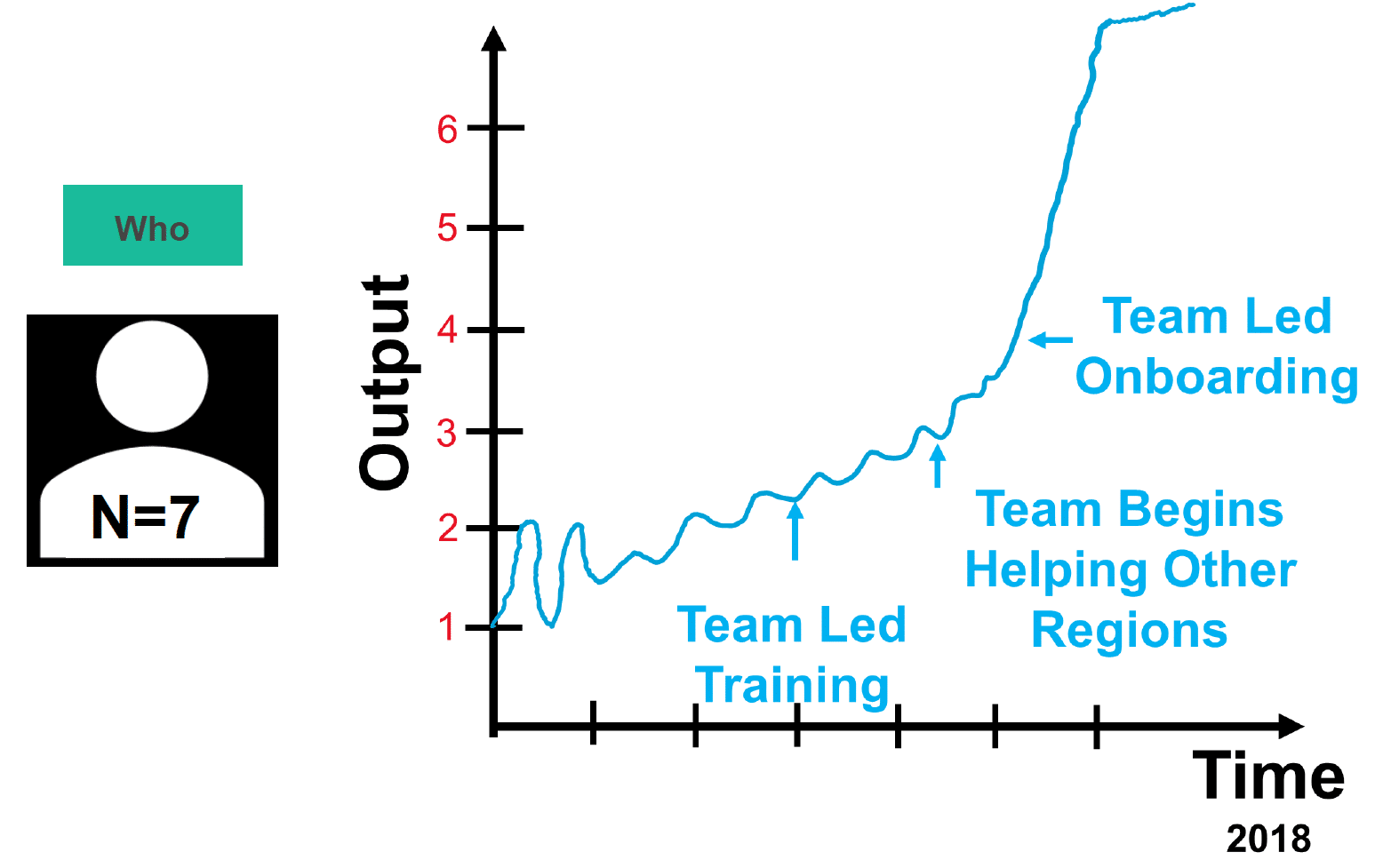Teams utilizing Scrum most often double their output in the first couple of Sprints because they become more efficient and effective. Equally impressive is that they sustain their gains and that they continue improving their teamwork and work product. As a result, they optimize customer value.
So, why would design and construction teams not use Scrum?
Well, one reason could be that they never heard of the Scrum framework. I worked half my construction career before becoming aware of it .
Another reason is that they are aware of it but simply don’t use it because they are resistant to change or have abandoned it because of negative experiences.
Some design and construction professionals even discourage Scrum adoption. I’m sharing my experiences so you can decide what is best for your teams.
Awareness is the key to Scrum success
Some teams that discontinued using Scrum shared experiences about how their manager wasn’t on board or how they stopped using it because the sticky notes were taking too much time to fill in and move across the Scrum board. Others told me they stopped using a specific Scrum software because it was too time-consuming to enter and update the tasks.
Further dialogue with these construction professionals revealed the real root causes:
- Individual Awareness
- Team Awareness
- Organization Awareness
The types of awareness with new or “experienced” design and construction Scrum teams varies. These are my summarized observations with thousands of practitioners.
1. Individual Awareness
Individuals with unreliable Scrum results can’t describe the framework and are very often unaware of the existence of the Scrum Guide. Although the Scrum Guide is not a detailed procedure manual, the first section notes that tactics for implementing Scrum are described elsewhere. Individual awareness of the Scrum artifacts is also low or nonexistent. There are three (Product Backlog, Sprint Backlog, and Increment) and each represents the work in three distinct phases. The key purpose of each artifact is to provide information for shared understanding of the work and progress towards the goal.
2. Team Awareness
Teams with unreliable Scrum experiences don’t operate as a Scrum team. There are only three roles in Scrum: Product Owner, Scrum Master, and Development Team. Those role labels were born in software development but the Scrum Guide details how they are implemented in a variety of organizations including those with teams developing software, hardware, networks, autonomous vehicles, education, government, marketing, managing the operation of organizations, daily life management, and even for organizational knowledge transfer. Teams of people with varied titles and functions use Scrum for products, services, and organizational management. Regardless of industry, Scrum teams designate people to each of the three Scrum roles. Teams not operating in the framework are usually unaware of the roles and their unique purposes.
3. Organization Awareness
Organizations with unreliable Scrum experiences are composed of individuals, teams, or combinations of both that don’t operate using the Scrum framework. Remember, collections of individuals and teams make up an organization.
Ready to Scrum?
The first step to fully adopt the Scrum framework is to increase your awareness. Invest in understanding firsthand by reading the Scrum Guide and engaging with an experienced Scrum Master.
What is Scrum?
Scrum is one very powerful and lightweight framework that can make your job easier, better, and faster.
The Scrum framework was born in the 1990s and allows people to manage complex, adaptive projects. It is based on the three pillars transparency, inspection, and adaptation. It also supports people to produce work at the highest possible value for customers in a productive and creative way.
The Scrum Team consists of a Product Owner, the Development Team, and a Scrum Master. Scrum teams are self-organizing and cross-functional, so you don’t have to rip up your business cards or officially change your title. Within the framework, Scrum teams can utilize various processes and techniques. They have associated roles, events, and rules. Teams using the framework report results in increased capacity, quality, and customer satisfaction.
Scrum events are used in Scrum to create regularity and to minimize the need for meetings. Events have a specified time frame and maximum duration.
Sprints are the heart of Scrum and most often one to two weeks long. They have consistent durations throughout a project. Once a sprint begins, it is fixed and cannot be shortened or extended. Sprints consist of Sprint Planning, Daily Scrums, the development work, the Sprint Review, and the Sprint Retrospective.
For those who want to understand Scrum and its underlying principles, I highly recommend the 19-page Scrum Guide by Ken Schwaber and Jeff Sutherland to gain an understanding of the complete framework and its underlying principles.

This sketch visually outlines the Scrum framework.
Let’s look at three Scrum success stories.
Scrum Success Story #1: Team doubles output without extra effort
A construction team of seven used the Scrum framework to manage all their project management tasks on a large healthcare patient bed tower project while simultaneously managing up to six smaller projects ranging in size from half a million to several million dollar value projects. Equally impressive was the positive client feedback about the project’s high quality, beneficial impact to their ongoing patient care operations, and project stakeholder collaboration among the hospital staff, designers, and frontline trade partners. From my perspective, the most impressive part of this Scrum team aside from the client feedback was that they didn’t have to add more staff as more projects were added and also didn’t have to work longer hours to get the work done. The team more than doubled their output without extra effort.
Scrum Success Story #2: Team organizes record-breaking national conference in a third of the time
In 2019, I worked with a team that was geographically spread across the United States and had the task of organizing a national construction conference. Traditionally, the team (made up of construction professionals) used to take twelve months to organize the event. With Scrum, they were able to organize the event in four months and spend additional meeting time making value-added changes to the proceedings. The time saving of eight months represents 66.7% of the former 12-month duration. The event had record breaking attendance and higher customer satisfaction ratings as compared to past conferences. Often, the first big gains are reductions in staff meeting durations and improved communication among internal and external project stakeholders.
Scrum Success Story #3: McCarthy increases performance from two to nine projects at any time while working less
One of our teams at McCarthy attended a ‘Scrum Lunch and Learn’ that I hosted. After implementing the Scrum framework for a few months, they asked me questions about their adoption. It became a positive coaching relationship, which allowed them to do all the heavy lifting, develop, and reap the professional benefits. On their own they were then able to reduce weekend work while managing three projects at a time. In other words, they added one project while working less. With some velocity guidance from me, they accelerated and tripled their output. Within 30 days, they took on four more projects. Then, they began training themselves and other teams. When interns arrived that summer, they organized the onboarding training organically on their own. Today, this team is capable of working on nine projects at any time and demonstrates a disciplined commitment to continued improvement.


Additional Resources:
Scrum Guide by Ken Schwaber and Jeff Sutherland
Scrum Alliance and Scrum Guide
LCI Getting Started with Lean Video
What is Lean?
https://www.lean.org/WhatsLean/
International Lean speaker, a serial intrapreneur, Felipe Engineer-Manriquez is a committed Lean practitioner with two decades of construction industry experience. He is an active contributing member of the Lean Construction Institute and an approved instructor/facilitator. Engineer-Manriquez was honored with the Lean Construction Institute (US) Chairman’s Award during the 21st Annual LCI Congress (Oct. 14-18, 2019) in Fort Worth, Texas, for contributions to the Institute and the design and construction industry as a whole.
Felipe works with executive leadership and guides senior leaders for strategic planning and improving work processes. He works directly with regional VPs of operations to ensure safety, quality, production, and net margin enhancement. He mentors designers/engineers, and project teams across the nation. He has more than 20 years of experience in construction and more than ten years of experience in business strategy implementation. Felipe has a Bachelor of Science in Electrical Engineering, an MBA, and holds active leadership roles in the Lean Enterprise Institute, Construction Industry Institute, and other business organizations.
He is a Jeff Sutherland Certified ScrumMaster® with years of weekly sprints moved to Done and user of Scrum to lead thousands of fellow construction professionals via guided interactive learning. Felipe also currently serves as the chair of the Construction Industry Institute Collaborative Scheduling Research Team (18-362).




